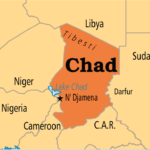An assessment of the women financial inclusion in Nigeria has revealed that since 2012, although women’s exclusion has dropped, the gender gap has grown, revealing that men’s inclusion has improved more rapidly than women’s.
The research, which was launched in Lagos penultimate Monday, was conducted by the Enhancing Financial Innovation and Access (EfinA), funded by the Gates Foundation, supported by the Financial Inclusion Secretariat (FIS) of the Central Bank of Nigeria.
Financially excluded individuals are defined as those in the Nigerian population over 18 years of age who do not have or use any financial products or services, whether formal or informal.
Speaking on the findings of the study at the launch the CEO, Managing Director at EdFin Microfinance Bank, Bunmi Lawson said: “Financial institutions should take it upon themselves to provide financial education to more women, this will aid financial inclusion.”
Lawson noted that Financial institutions/service providers can also use more female role models to make their services more relatable and focus on this in communication as well.
The study indicated that financial exclusion stands at 36% for women and 24% for men while the relative gender gap related to financial inclusion is -20-30%, placing Nigeria below its peers.
While 75% of young adults in Kenya have access to a mobile money account, it’s only 1 in 10 in Nigeria.
The National Financial Inclusion Strategy (NFIS) was launched in 2012 to reduce financial exclusion to 20% of the adult population. However, according to the revised NFIS, Nigeria is not on track to achieve its 2020 targets.
The gender gap in Nigeria represents a major issue to be resolved if the country is to achieve the targets it set in its National Financial Inclusion Strategy (NFIS).
Ini Abimbola of Thristle Consulting noted that the results of the research were not surprising because more women have low income from subsistence farming and trading and are not interested in the charges from the traditional banks.
He said: “To work on the issue of trust, research shows that Women trust FMCG agents more than the traditional banks and a solution is being created to work around this.
About two in 10 men do not trust any Financial service providers, it is over 3 in 10 for women, this is driving a lot of the gender differences that we see. – Ashley Immanuel, the head of programme at EFInA had noted in her presentation.
Agada Apochi, the CEO of unified payments in his intervention, identified three areas that need to be worked on to improve financial inclusion in Nigeria, namely Regulation: ensure that everyone has a level playing field Capital: especially for local players and accessibility; availability and willingness by investors
EFInA implemented a mixed methods approach by conducting a desk research review of existing data sources, including Findex 2017 and EFInA Access to Financial Services in Nigeria 2018 survey, to understand the current state of the gender gap in Nigeria compared to its peer countries.
The researchers interviewed financial service providers and non-financial support organisations to better understand the current financial services ecosystem in Nigeria.
They administered a nationally representative quantitative survey focused on identifying drivers of the gender gap; and performed qualitative analysis (based on human-centred design) to explore the key themes emerging from the quantitative survey in an effort to understand the needs, behaviours and motivations of different segments of excluded women in Nigeria.
The study also explored the gaps that most impact women’s access to financial services in Nigeria, and identified the characteristics of financial products and services that could meet the needs of excluded women.
It also explored how usage, access, and supply of financial services differ between women and men in Nigeria; what specific gaps and challenges impede Nigerian women’s access to financial services, and what can be done by CBN, EFInA and its partners to address the gender gap and reduce inequality.
Analysis of the study showed that the most important drivers of financial exclusion for both genders are lack of income, lack of education, and low trust in Financial Service Providers (FSPs) and that these factors also drive the gender gap.
It showed that because women have lower income, education, and trust levels than men, these factors also, to a large extent, explain the gender gap in overall exclusion. In other words, women and men with similar levels of income, education, and trust in FSPs are approximately equally likely to be financially excluded yet women typically have much lower levels of income and education than men do.
The study further noted that income, education, and trust in FSPs are so important that the effects of other factors on exclusion—that are commonly believed to be strong and that are often the focus of interventions—are dwarfed by comparison.
The study further revealed that three additional variables complement the dominant factors (levels of income, education and trust in FSPs) when looking at formal and informal-only inclusion. The first, mobile phone ownership, acts as a powerful predictor of formal financial inclusion. The second, location in rural areas, corresponds with a greater likelihood that individuals, even at higher levels of income and education, will rely only on informal services. And the third, marital status has a complex and nuanced effect on informal-only inclusion.
The analysis further suggests that women want financial solutions that offer value propositions that fit the existing context of their lives. Women make multiple decisions daily to manage limited income and meet their needs. Mostly, they seek solutions that provide them with greater control over their money and allow them to balance their cash flow.
The study identified relevant financial products and services for excluded women to include: Family oriented financial products and services. For example, joint family accounts for household spending or savings, particularly where multiple people have a stake in household finances.
It canvassed structured savings solutions to help women save effectively while meeting their competing daily needs and payment systems that formalise social giving to enable tracking of contributions and create transparency in an effort to help ensure participants get some return for their contributions.
It also recommended financial products that enable widows and traders to manage business purchases and savings as well as a structured group finance products that link farmers and traders to capital and markets so they can expand their businesses, increase revenue, and/or access efficiencies.
The study further recommended Informational services that build trust and rapport between women and FSPs by leveraging existing community structures to promote and deliver financial services and corresponding skills.
 Join Daily Trust WhatsApp Community For Quick Access To News and Happenings Around You.
Join Daily Trust WhatsApp Community For Quick Access To News and Happenings Around You.


